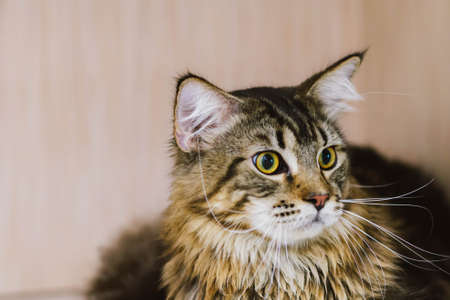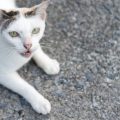Introduction to Siamese Cats in the UK
Siamese cats, with their striking blue eyes, elegant build, and distinctive vocal personalities, have long held a special place in the hearts of cat lovers across the United Kingdom. Originally hailing from Thailand (formerly Siam), this breed was introduced to Britain in the late 19th century and quickly captivated the British public with its regal appearance and charming temperament. Over the decades, Siamese cats have become one of the most recognisable and cherished breeds within British households, admired for both their companionship and their unique aesthetics. Their presence in historical records and appearances at prestigious cat shows underscore their ongoing significance in British culture. The following table provides a brief overview of key characteristics that contribute to the enduring popularity of Siamese cats among UK pet owners:
| Characteristic | Description |
|---|---|
| Origin | Thailand (Siam) |
| Introduced to UK | Late 1800s |
| Physical Traits | Sleek body, almond-shaped blue eyes, pointed coat patterns |
| Temperament | Affectionate, intelligent, vocal |
| Popularity in UK | Consistently among top pedigree breeds |
Throughout generations, Siamese cats have been celebrated not only for their elegance but also for their ability to form strong bonds with humans, making them a beloved fixture in many British homes.
Distinctive Appearance and Elegance
Siamese cats are renowned across the United Kingdom for their unmistakable elegance and refined appearance. These felines captivate with their slender, athletic bodies, which give them a graceful silhouette that stands out among other breeds. One of the most striking features of Siamese cats is their almond-shaped, vivid blue eyes, which seem to exude intelligence and curiosity. Their unique colour points—contrasting darker shades on the ears, face, paws, and tail—are another hallmark, resulting from a temperature-sensitive gene that produces this iconic pattern. The short, fine coat of a Siamese cat is typically glossy and close-lying, further accentuating its sleek physique. In Britain, Siamese cats are often regarded as the epitome of feline sophistication, making them a popular choice among those seeking both beauty and companionship in a pet.
| Physical Feature | Description |
|---|---|
| Body Shape | Slender, muscular, and elegant with long legs and a tapering tail |
| Eyes | Striking almond-shaped blue eyes |
| Colour Points | Darker shades on ears, face (mask), paws, and tail; body remains lighter in colour |
| Coat | Short, fine, and glossy; easy to groom |
This combination of distinctive features not only makes Siamese cats visually appealing but also sets them apart as one of the most easily recognisable breeds in the UK. Their poised demeanour and refined look have solidified their status as cherished companions in British homes.

3. Temperament and Personality
Siamese cats are renowned for their distinct temperament, making them a cherished companion in many British homes. Known for their sociable and affectionate nature, these elegant felines thrive on human interaction and rarely enjoy being left alone for extended periods—a trait that fits particularly well with the UKs trend towards pet-friendly households and flexible working arrangements.
One of the most notable characteristics of Siamese cats is their vocalisation. They are often described as chatty, using a wide range of meows, chirps, and purrs to communicate with their owners. This engaging behaviour endears them to families and individuals who appreciate a lively and communicative pet. In a typical British setting, where pets are increasingly considered members of the family, Siamese cats can quickly become central figures in daily routines.
How Siamese Traits Suit British Lifestyles
| Trait | Description | Fit for UK Homes |
|---|---|---|
| Sociable | Loves company; dislikes isolation | Ideal for families or those working from home |
| Vocal | Communicates openly with varied sounds | Engages households that value interactive pets |
| Affectionate | Enjoys cuddles and attention | Suits owners seeking companionship and emotional support |
Nurturing Sociability in the UK Context
In Britain, where community spirit and neighbourly interactions are valued, Siamese cats often mirror this social dynamic within the household. Their love for attention and play makes them excellent companions for children and adults alike, while their intelligence means they respond well to training and enrichment activities—such as puzzle feeders or interactive toys commonly found in UK pet shops.
4. Health Considerations and Care
Siamese cats are cherished companions across the United Kingdom, but their unique breed characteristics come with specific health considerations. Responsible guardianship involves understanding common health issues, maintaining preventative healthcare routines, and addressing the breed’s dietary and grooming needs.
Common Health Concerns in Siamese Cats
Siamese cats are generally robust, but they are predisposed to certain hereditary conditions. Early awareness and regular veterinary checks can help mitigate risks. The table below summarises some of the most notable concerns:
| Health Issue | Symptoms to Watch For | Recommended Action |
|---|---|---|
| Respiratory Disorders | Snoring, laboured breathing | Consult your vet for assessment and management |
| Dental Disease | Bad breath, drooling, difficulty eating | Annual dental check-ups and regular tooth brushing |
| Progressive Retinal Atrophy (PRA) | Night blindness, hesitant movement in low light | Routine eye examinations by a veterinary ophthalmologist |
| Amyloidosis (liver/kidney disease) | Lethargy, weight loss, increased thirst or urination | Prompt veterinary attention; blood/urine tests as recommended |
Preventative Healthcare
Prevention is always preferable to cure. Regular vaccinations against feline infectious diseases (such as FHV, FCV, and FeLV), flea and worming treatments tailored for UK environments, and microchipping are standard practices. Annual health checks at your local vet surgery ensure early detection of emerging issues and support a longer, healthier life for your Siamese companion.
Nutrition Tailored to Siamese Cats
Siamese cats have a slender, muscular physique that benefits from a balanced diet rich in high-quality protein. Choose a complete commercial cat food formulated for active breeds or discuss raw/home-prepared options with your vet to ensure nutritional adequacy. Fresh water should always be available. Treats should be offered sparingly to prevent obesity—an emerging concern among indoor cats in the UK.
Grooming Requirements
The short, fine coat of the Siamese requires minimal grooming compared to long-haired breeds but still benefits from weekly brushing to remove loose hair and reduce hairballs. Nail clipping every few weeks and regular ear cleaning help maintain overall hygiene. As Siamese cats are particularly sociable, these routines can double as bonding opportunities.
Quick Grooming Checklist for UK Owners:
- Brush coat once a week with a soft-bristle brush
- Inspect ears monthly; clean gently if needed with vet-approved solution
- Clip nails every 2–4 weeks using proper cat nail clippers
- Monitor teeth and gums; brush regularly with cat-safe toothpaste
Siamese cats thrive when their physical and emotional wellbeing are prioritised. With proactive care tailored to their specific needs, these elegant felines will remain cherished members of British households for years to come.
5. Living with a Siamese Cat in the UK
Siamese cats are renowned for their intelligence, vocal nature, and affectionate companionship. In the UK, where homes and lifestyles can vary from bustling city flats to spacious countryside cottages, providing an enriching environment is essential for the well-being of this beloved breed.
Enriching Your Home Environment
Siamese cats thrive on interaction and stimulation. It is important to create a home that caters to their inquisitive minds and need for activity. Consider offering a variety of toys and climbing structures to keep your cat entertained. Puzzle feeders, interactive toys, and scratching posts can all help prevent boredom and unwanted behaviours such as excessive vocalisation or scratching furniture.
Recommended Toys and Activities
| Toy/Activity | Benefits |
|---|---|
| Puzzle Feeders | Encourages problem-solving and slows eating |
| Interactive Wands | Provides exercise and bonding time |
| Cat Trees & Shelves | Allows climbing, jumping, and resting at heights |
| Laser Pointers | Mental stimulation and active play (always supervise) |
| Kicker Toys & Balls | Solo entertainment for when you’re out |
Outdoor Access: Safety First
While some British cat owners choose to let their pets roam outdoors, Siamese cats are best suited to supervised access due to their trusting nature and value as a pedigree breed. Catios (enclosed patios) or secure gardens are ideal for safe exploration. If outdoor access is not possible, consider harness training your Siamese for supervised walks in local parks or green spaces.
Adapting Care for British Weather & Living Arrangements
The UKs variable climate means adapting care for your Siamese cat is essential. During colder months, ensure your home is draught-free and provide cosy bedding away from chilly windows or doors. Heated beds can be especially comforting. For those living in flats or smaller properties, vertical spaces such as shelves or window perches maximise territory without taking up floor space.
Quick Tips for UK Siamese Owners:
- Keep indoor temperatures comfortable year-round; Siamese cats have short coats and feel the cold more easily.
- Monitor humidity levels—central heating can dry out the air, so use a humidifier if necessary.
- If your home has multiple occupants or other pets, set up quiet areas where your Siamese can retreat undisturbed.
- Always check outdoor enclosures for security—urban foxes and road traffic pose risks in many British towns and cities.
- Rotate toys regularly to maintain interest and prevent boredom.
Siamese cats bring elegance and charm to any British household. With thoughtful adaptations to your living environment, you can ensure your feline companion enjoys a healthy, happy life regardless of where in the UK you call home.
6. Ethical Breeding and Adoption
When considering bringing a Siamese cat into your home in the United Kingdom, it is essential to prioritise ethical breeding and responsible adoption practices. Responsible ownership begins with understanding the importance of supporting reputable breeders or adopting through trusted rescue organisations. In the UK, ethical breeders prioritise the health, temperament, and welfare of their cats, ensuring that kittens are well-socialised and free from hereditary diseases. Before selecting a breeder or adoption centre, prospective owners should conduct thorough research, visit facilities when possible, and ask for documentation regarding health checks and vaccinations.
Identifying Reputable UK Breeders
| Criteria | Reputable Breeder |
|---|---|
| Registration | Registered with GCCF, TICA, or FIFe |
| Health Screening | Provides proof of genetic testing and vaccinations |
| Kitten Welfare | Kittens raised in a home environment; socialised with people |
| Support | Offers guidance pre- and post-adoption |
Considering Adoption Options
If you are open to adoption, there are several Siamese-specific rescue groups and general cat shelters throughout the UK. Adoption can be a rewarding way to give a loving home to a cat in need. When adopting, ensure that the organisation provides health histories and matches cats with suitable owners based on lifestyle and experience. Many rescues also offer advice on settling your new Siamese into its environment.
Responsible Ownership Matters
The decision to welcome a Siamese cat should always be made with long-term commitment in mind. This includes providing appropriate veterinary care, proper nutrition, mental stimulation, and plenty of affection. By choosing ethical sources—whether through reputable breeders or adoption—you help support the welfare of this elegant breed across the United Kingdom.
7. Conclusion: Cherishing the Siamese Companion
Welcoming a Siamese cat into your home in the United Kingdom is an immensely rewarding experience, blending joy with meaningful responsibility. These elegant felines enchant owners with their striking looks and affectionate nature, forming strong and lasting bonds with family members of all ages. Their intelligence and sociable temperament make them wonderful companions, thriving on human interaction and bringing warmth to households across the UK.
Caring for a Siamese cat involves a commitment to meeting their physical and emotional needs—from providing a balanced diet and regular veterinary care to ensuring they have plenty of stimulation and companionship. Their vocal personality and need for engagement mean that owners should be prepared to devote time each day to play, conversation, and affection.
The Joys and Responsibilities at a Glance
Joys |
Responsibilities |
|---|---|
| Affectionate companionship | Daily interactive playtime |
| Unique vocal communication | Regular grooming and health checks |
| Elegant appearance | Balanced nutrition tailored to breed needs |
| Strong family bonds | Mental stimulation and social interaction |
| Lively personality | Safe indoor environment or secure outdoor access |
Siamese cats have woven themselves into the fabric of British homes, offering both companionship and character. By understanding their unique needs and embracing the responsibilities of ownership, families can enjoy years of mutual loyalty, joy, and memorable moments with these remarkable cats. In cherishing your Siamese companion, you are not just welcoming a pet—you are inviting a loyal friend who will enrich your life in countless ways.


